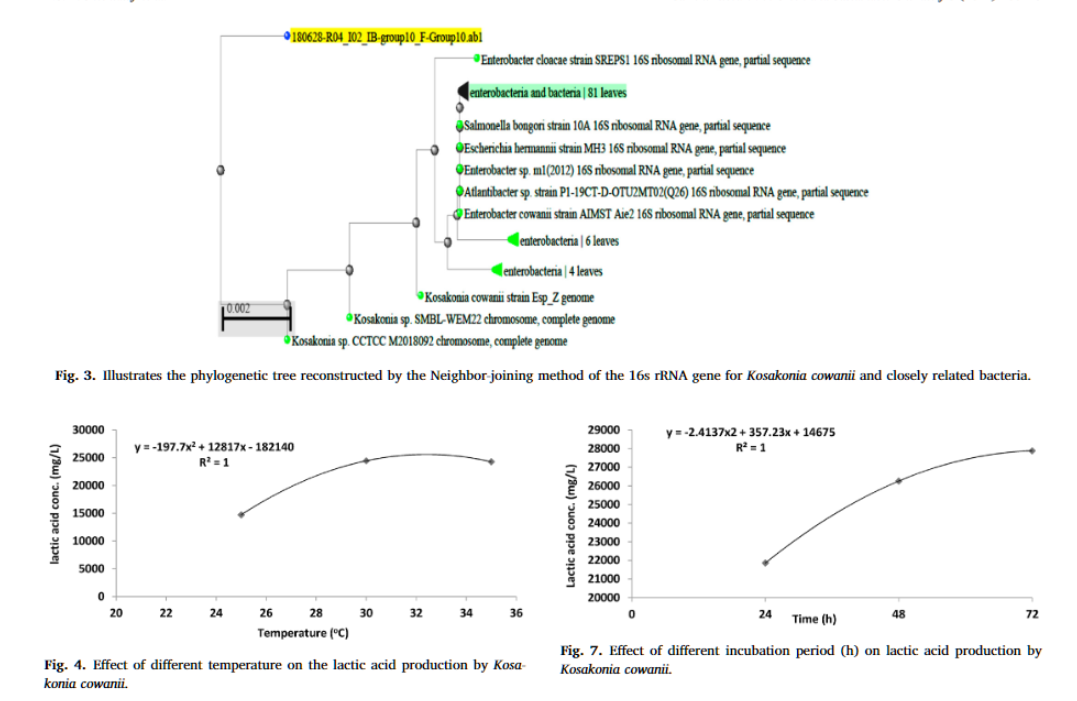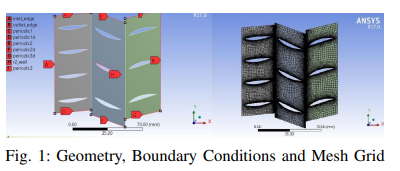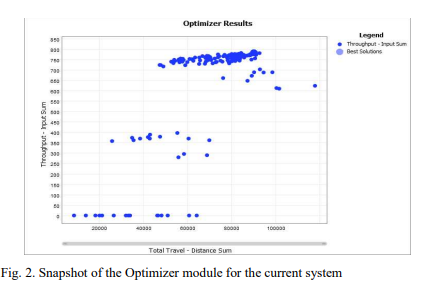Breadcrumb

Investigation of root causes of order unfulfillment: A Logistics case study
This study targets an order fulfillment problem in a freight forwarding company. Some applicable solutions are implemented such as supplier performance evaluation, suppliers' selection, and location analytics. The objective of the study is to reduce the number of unfulfilled orders by supply planning. Some of the tools used to achieve this are Excel (VBA and Pivot tables) to perform drivers' scoring, analytic hierarchy process (AHP), and ArcGIS software to visualize locations. The results showed that the company can implement the suggested solutions to reduce the number of order cancellations

Optimization of lactic acid production from agro-industrial wastes produced by Kosakonia cowanii
Lactic acid is used for the preparation of poly-lactic acid. The objective of this research was to produce lactic acid from agro-industrial wastes as cheap, renewable substrates, and also reduce the pollution burden on the environment. Sixteen bacterial isolates were isolated from agro-industrial wastes. The chemical hydrolysis of agro-industrial wastes was achieved with hydrochloric acid, sulfuric acid, and sodium hydroxide. The highest yield of lactic acid produced was identified using 16S rRNA. The optimum conditions for lactic acid production were determined. Calcium lactate, produced from

Optimized Preliminary Design of a Multistage Low-Speed Axial FLow Compressor
This paper proposes a technique based on a MAT-LAB code capable of getting an optimized preliminary design of an efficient low-speed compressor qualified for laboratory experiments with relatively low cost. The code was made to design five repeated compressor stages on two steps conducted iteratively, namely 'mean line and radial design' to determine the optimum compressor geometry and then the 'off-design' to test the stability of the design in other working conditions. The optimization tool minimizes a flexible cost function which can be changed if needed to get different designs. A certain

FlexSim Simulation to Enhance Productivity of a Production Cell : A Case Study
The use of modelling and simulation as a decision-making tool has increasingly been recognized to solve industrial problems. Modeling and simulation are utilized in this study to assess, analyze, and provide recommendations for improving the performance of an existing production cell in a manufacturing plant. To analyze the performance of the assembly line under investigation, multiple key performance indicators (KPIs) are determined. With the aid of FlexSim simulation tool, an improved system is recommended after running more than 90 different scenarios to enhance the productivity. The
Supervised fuzzy C-means techniques to solve the capacitated vehicle routing problem
Improving Productivity of A Production Line in Perfumes Industry in Egypt Using Lean Manufacturing Methodology
This study presents proposed solutions for increasing the productivity of a production line in the perfumes industry in Egypt using lean manufacturing methodology. Enhancing efficiency is a major significant objective to consider in a typical manufacturing firm to improve the overall performance. Increasing productivity is achieved through applying an extensive lean program implementing appropriate lean tools to solve problems identified as wastage in materials and activities as well as bottlenecks increasing lead time. Information of current problems and gaps are gathered through visits and
Improvement of structural efficiency in metals by the control of topological arrangements in ultrafine and coarse grains
Improvement of structural efficiency in various materials is critically important for sustainable society development and the efficient use of natural resources. Recently, a lot of attention in science and engineering has been attracted to heterogeneous-structure materials because of high structural efficiency. However, strategies for the efficient design of heterogenous structures are still in their infancy therefore demanding extensive exploration. In this work, two-dimensional finite-element models for pure nickel with bimodal distributions of grain sizes having ‘harmonic’ and ‘random’
